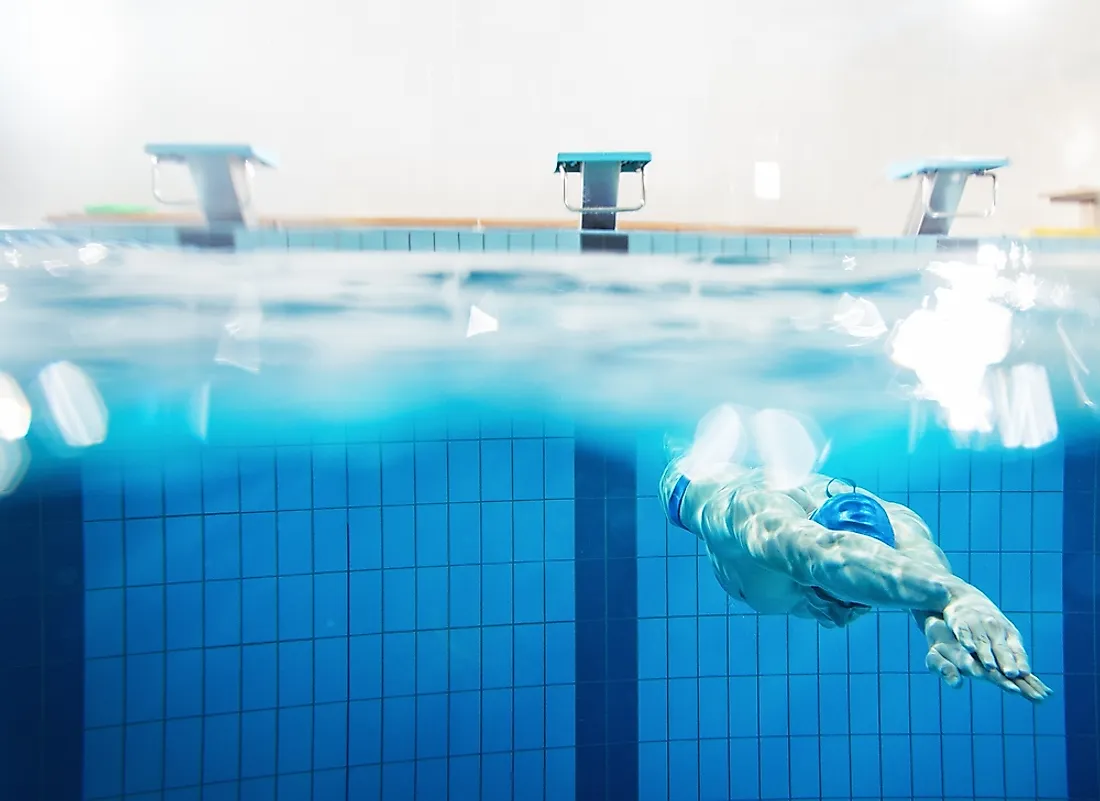How Big Is An Olympic-Size Swimming Pool?

The International Olympic Committee (IOC) recognizes the International Swimming Federation (FINA) for international administration of water sports. As such, FINA has outlined specifications of an Olympic-size pool. A typical Olympic-size pool is 50 meters long, 25 meters wide, and two meters deep.
Specifications for Olympic-size Swimming Pools
As mentioned earlier on, the length of an Olympic-size swimming pool needs to be 50 meters long with an allowance of an extra 0.03 meter. Its length is the major reason as to why it is referred to as the “long course.” The short course pool is only 25 meters long. The width should be 25 meters with no extra allowance. Regarding the depth of the pool, there is a provision of at least two meters. The volume of water held in the Olympic-size pools should be 2,500,000 liters when the depth of the pool is two meters. However, the recommended depth is three meters. When touch panels are used during a competition, the distance between them should be either 25 meters or 50 meters to be recognized by FINA. Hence, the Olympics pools will most likely be over sized to accommodate the touch panels required for the competitions.
Additionally, FINA requires ten lanes for the Olympics. The ten lanes received approval at FINA’s 2009 Congress. Hence, the federation banned the use of the traditional eight-lane courses at the Olympics. However, the use of the eight-lane pools for the World Championships is ongoing. The lanes usually have widths of 2.5 meters. There is also a recommendation for water temperature and light intensity. The water temperature for the pools should be from 25-28 degrees Celsius. Furthermore, the minimum intensity of light allowed is 1500 lux.
Training of Swimming Athletes
Swimming is among the most followed Olympic Games. To prepare for the Olympics, many athletes prefer training in 50 meter long pools to build their endurance. Furthermore, such a pool exemplifies an open water situation and also helps them keep rhythm during actual competitions. On the contrary, athletes who seek to improve their swimming speed train in 25 meters pools.
5 Olympic-size Pool Facts
1.) According to NASA, California would need an amount of water equivalent to the volume of 16.7 million Olympic-sized pools to recover from its history of droughts.
2.) The Olympics swimming sport has been in existence since 1986 when competitors first participated in the game in Athens.
3.) During the first Olympics swimming competition, swimmers used the Mediterranean Sea.
4.) The first Olympics swimming games to be held in an actual pool was during the 1908 London Games. At the 1900 Paris Olympics, swimmers competed in the Seine River accompanied by ducks and fish.
5.) The four swimming strokes used during Olympic Games are freestyle, breaststroke, butterfly, and backstroke. The use of a combination of all four strokes is permitted. The combination of the swimming strokes is called individual medley.











